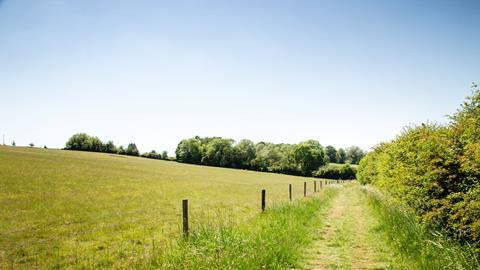Farming and environmental groups broadly welcome new measures but call for further clarity and a ‘long-term vision’
Eagerly anticipated details on the government’s post-Brexit farm subsidy scheme in England have been unveiled.
Under the Environmental Land Management Schemes, landowners and farmers will be paid public money for environmental and sustainable food production.
Thanks to the schemes, actions such as managing pests without chemicals and working towards net zero will be rewarded with funding.
The reaction from farming and environmental organisations has been mixed, with praise for the Sustainable Farming Incentive’s “broader, more flexible offer” as well as criticism that there is no “long-term vision” and that the plans still lack of clarity in some areas.
In England, the ELMS will now comprise three payment schemes:
- The Sustainable Farming Incentive, which focuses on soil health and reducing the use of inputs such as fertilisers and insecticides.
- The Landscape Recovery Scheme, which will pay landowners for large-scale rewilding projects focusing on net zero, protected sites and habitat creation.
- The Countryside Stewardship Plus Scheme, which will reward farmers for action to support climate change adaptation and benefitting nature.
Expanded schemes
The Sustainable Farming Incentive is being expanded to include six additional standards this year, including payments for actions on hedgerows, grassland, arable and horticultural land, pest management and nutrient management.
These build on the three existing standards to improve soil health and moorlands introduced in 2022 – which nearly 1,900 farmers already have in agreements.
When it comes to the Landscape Recovery scheme, Defra announced that, following high demand last year, it will open applications for the second round in the spring.
Projects could include creating and enhancing woodlands, peatland, nature reserves and protected sites such as ancient woodlands, wetlands and salt marshes.
Meanwhile, the Countryside Stewardship Plus will reward farmers for “taking coordinated action, working with neighbouring farms and landowners to support climate and nature aims”. This includes natural flood management, peatland restoration and enhancing woodland.
Under the Countryside Stewardship Scheme, 30 additional actions will be made available to farmers by the end of 2024, building on the 250 actiuons currently available to farmers.
The next round of Countryside Stewardship higher-tier funding will open in February, with mid-tier funding following in March.
Further details on the new standards and payment rates being rolled for the Sustainable Farming Incentive, as well as information on the future roll out of Countryside Stewardship Plus from 2024 are available on the Defra website.
Environment secretary Thérèse Coffey said: “Farmers are at the heart of our economy – producing the food on our tables as well as being the custodians of the land it comes from.
“These two roles go hand in hand and we are speeding up the roll-out of our farming schemes so that everyone can be financially supported as they protect the planet while producing food more sustainably.”
‘Encouraging’
Responding to the announcement, NFU vice president David Exwood said: “It’s encouraging that Defra has provided us with more detail on the future of the ELM programme and brought forward a broader, more flexible offer for the Sustainable Farming Incentive (SFI).
“Information on the six new standards for SFI 2023, payments rates, as well as the evolving Countryside Stewardship scheme, is incredibly useful and provides some of the clarity we have been asking for.
“For farmers and growers making crucial long-term decisions that are essential to running viable and profitable food producing businesses, it’s vital they have the full scheme details as soon as possible and know how the different schemes will work together.
“A speedy application and payment process will also be key to give farm businesses some much-needed security.”
‘Tinkering round the edges’
The Soil Association’s head of farming policy Gareth Morgan was more critical, saying: “There are welcome elements in today’s announcement but we must stop tinkering around the edges.
“Government must provide the long-term vision to help farmers do more than make small changes. They need a package of guidance and incentives that spark a shift to nature-friendly farming across their entire farms.
“Much that is set to be rewarded in this new policy was already part of existing Countryside Stewardship policies, and it remains unclear as to which scheme farmers should choose or how the policies will work together.
“The new incentives for agroecological and organic farming practices – like avoiding insecticides and using legumes for soil fertility instead of chemicals – are welcome. But information on the promised organic standard or any clarity for our sustainable farming pioneers is still missing. Support for game-changing action like planting more trees on farms is also desperately needed.”
’Not accessible enough’
Mark Tufnell, president of the Country Land and Business Association, added: “This is crunch time for a sector that has stoically tolerated years of turbulence and uncertainty.
“These standards and payment rates are broadly in line with what was expected and will encourage many arable farmers to take the leap into the new agricultural schemes. But there is little new in this for those on moorlands, or the hard-pressed hill farmer struggling to earn a living…
”The stakes for farmers could not be higher, and it is incumbent on the UK government to make these schemes accessible to all types of farms, thus giving the industry the confidence we need to make these schemes work.”




